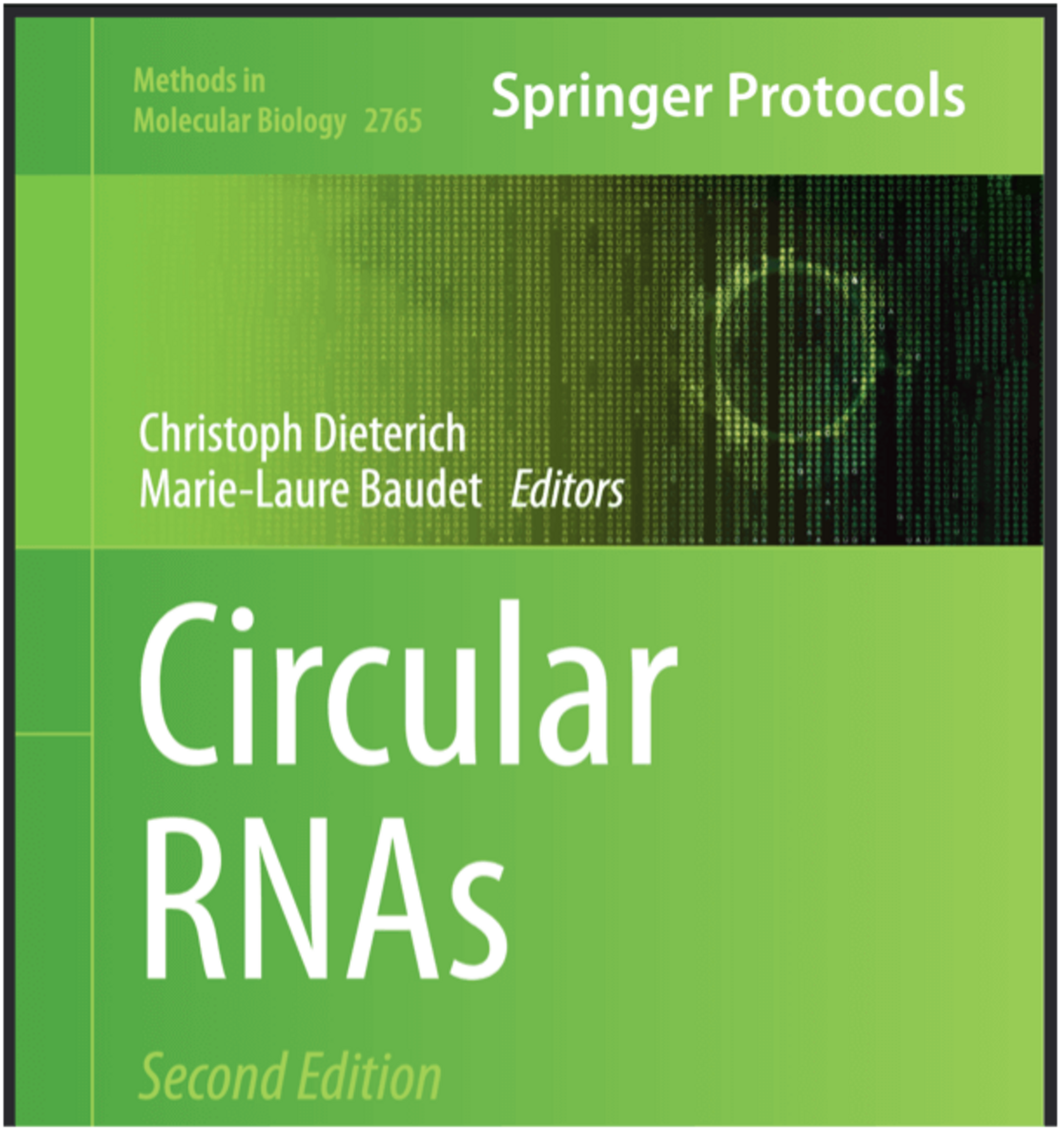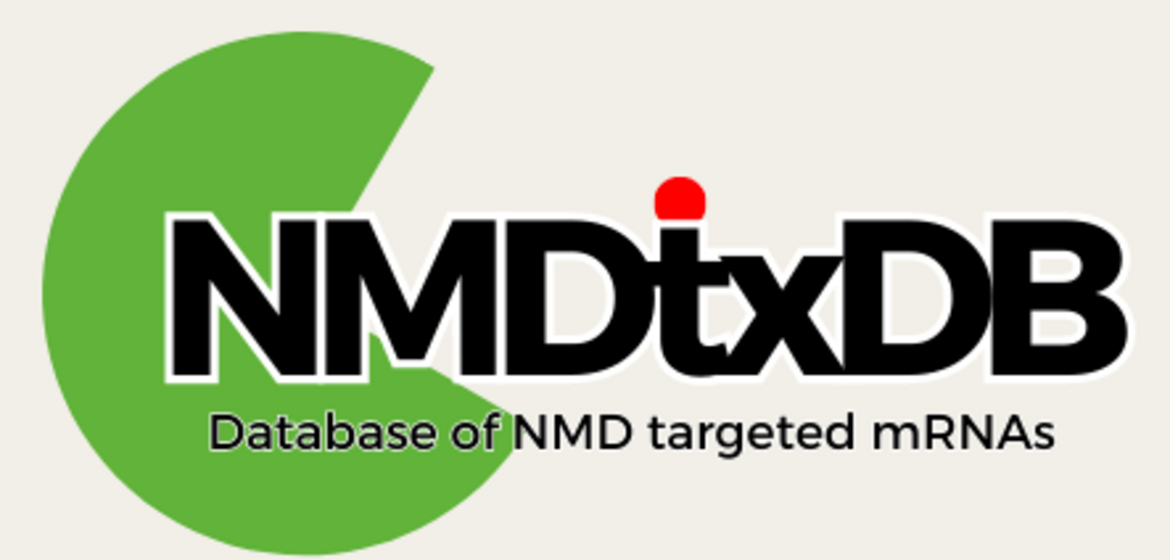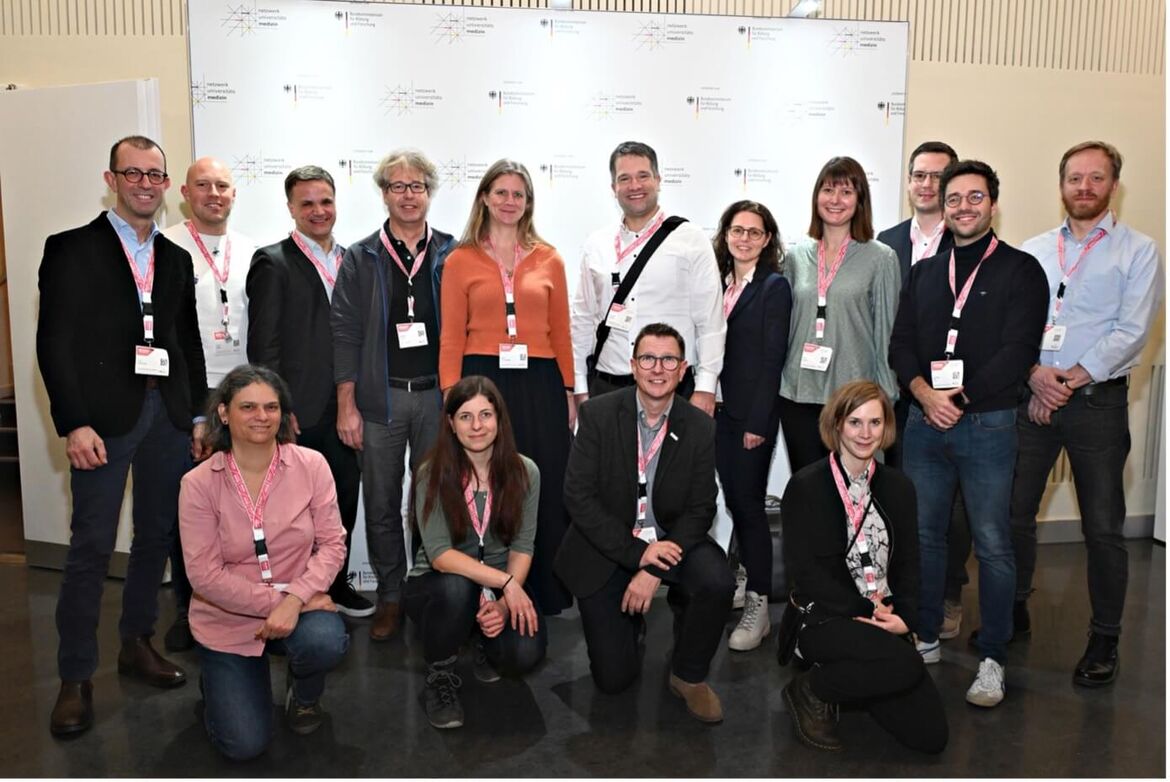News
EMBO circular RNA course
April 30, 2024, Heidelberg
EMBO funds a new edition of our legendary course on circular RNA research with the title: “gROUNDbreaking approaches for advancing circRNA research: detection, function and therapeutics”
Dates: 31 May 2025 – 6 June 2025
Location: IT–Trento
Organizers:
Marie-Laure Baudet, University of Trento, Italy
Vladimir Benes, EMBL Heidelberg, Germany
Marieangela Morlando, Sapienza University of Rome, Italy
Christoph Dieterich, Heidelberg University Hospital, Germany

mAFiA Publication
April 18, 2024, Heidelberg
Direct RNA-seq offers the possibility to identify RNA modifications on single molecules. Here, we report on the synthesis of biologically realistic training data and the development of mAFiA that accurately detects m6A on single read level.
Our mAFiA publication is now online at https://www.nature.com/articles/s41467-024-47661-2
METTL3 Publication
April 15, 2024, Heidelberg
The presence of chemical modifications in mRNA can impact its processing and contribute to observed differences between transcript and protein levels. Conventional RNA sequencing methods, which involve RNA-to-cDNA conversion, often fail to identify these modifications. Nanopore technology offers a direct sequencing approach capable of reading native RNA and detecting modifications like N6-methyladenosine (m6A). Enzymes like METTL3 are responsible for the formation of m6A, which increases under hypertrophic cardiac stimuli and in the myocardium of heart failure patients, playing a role in cardiac homeostasis regulation. Leveraging nanopore sequencing, we identified METTL3-dependent m6A sites with high fidelity, shedding light on their influence on cardiomyocyte function.
Our METTL3 publication is now online at https://www.ahajournals.org/doi/10.1161/CIRCULATIONAHA.123.066473
Circular RNAs Book Publication
February 24, 2024, Heidelberg
The first edition of Circular RNAs – Methods and Protocols appeared in 2018 and was a big success. So, Marie-Laure Baudet (CIBIO Trento) and myself teamed up this time to provide an update of this volume to present recent developments in the field. The 2nd volume just appeared online at Springer Protocols.
Although, we have made significant progress in identifying characteristic back-splicing junctions through RNA-sequencing data, many challenges remain concerning circular RNAs’ form and function. These aspects are covered in the new edition of Circular RNAs:
https://link.springer.com/book/10.1007/978-1-0716-3678-7

NMDtxDB Database Launch
February 05, 2024, Heidelberg
We're excited to announce the launch of NMDtxDB, a database dedicated to advancing our understanding of the Nonsense-Mediated mRNA Decay (NMD) pathway and its targets. This innovative platform combines data from NMD-depleted human cell lines with Nanopore long-read sequencing to reveal splicing isoforms like never before. NMDtxDB stands out by offering a comprehensive dataset that facilitates the identification of previously unannotated NMD targets, marking a significant leap forward in the field of transcriptomics of RNA decay.
In addition to its extensive dataset, NMDtxDB introduces a novel computational workflow for the construction and annotation of the transcriptome, facilitating the identification of premature stop codons and assessing transcript expression. The open-source nature of our tools and the web interface ensure that the database serves as not only a resource but also a community hub for scientists across the globe. Whether you are an NMD specialist or a researcher exploring related fields, NMDtxDB provides distinctive insights and tools to enhance your studies. With its user-friendly interface and extensive data, NMDtxDB is poised to emerge as a valuable resource for conducting research on the NMD pathway and its implications for human health. We want NMDtxDB to enable a new horizon in mRNA decay research by allowing faster cataloging of NMD targets and helping to further understanding what features lead to decay activation.
Please click here for the pre-print of this project.

TACOMA preprint
January 29, 2024, Heidelberg
We are excited to announce TACOMA, an online web-application tool, developed to facilitate the exploration of multi-omics data in heart research. TACOMA allows for the integrated analysis of proteomics and transcriptomics data from a TAC mouse model, offering a step forward in the understanding of heart failure mechanisms. Highlighting key findings such as metabolic shifts and exon-skipping events, novel transcripts and genes likely contributing to the pathogenesis of heart failure etc., TACOMA represents a valuable resource for researchers in the cardio-biology field.
Please click here for the preprint.
NUM Convention 2024
January 17 - 18, 2024, Berlin
Team Heidelberg (see picture) took part in the NUM Convention 2024 from January 17th - 18th, 2024 in Berlin. The University Medicine Network (NUM) organized the first “NUM Convention 2024: Gemeinsam forschen für Gesundheit” at the bcc Berlin Congress Center. The major challenges of a modern healthcare system were discussed here.
Further background information can be found at (in German): https://www.aerzteblatt.de/nachrichten/148727/Netzwerk-Universitaetsmedizin-hofft-auf-Verstetigung


![[Translate to English:] [Translate to English:]](/fileadmin/_processed_/2/3/csm_20210614_MedKlinik_004_26a0b1fc8e.jpg)


